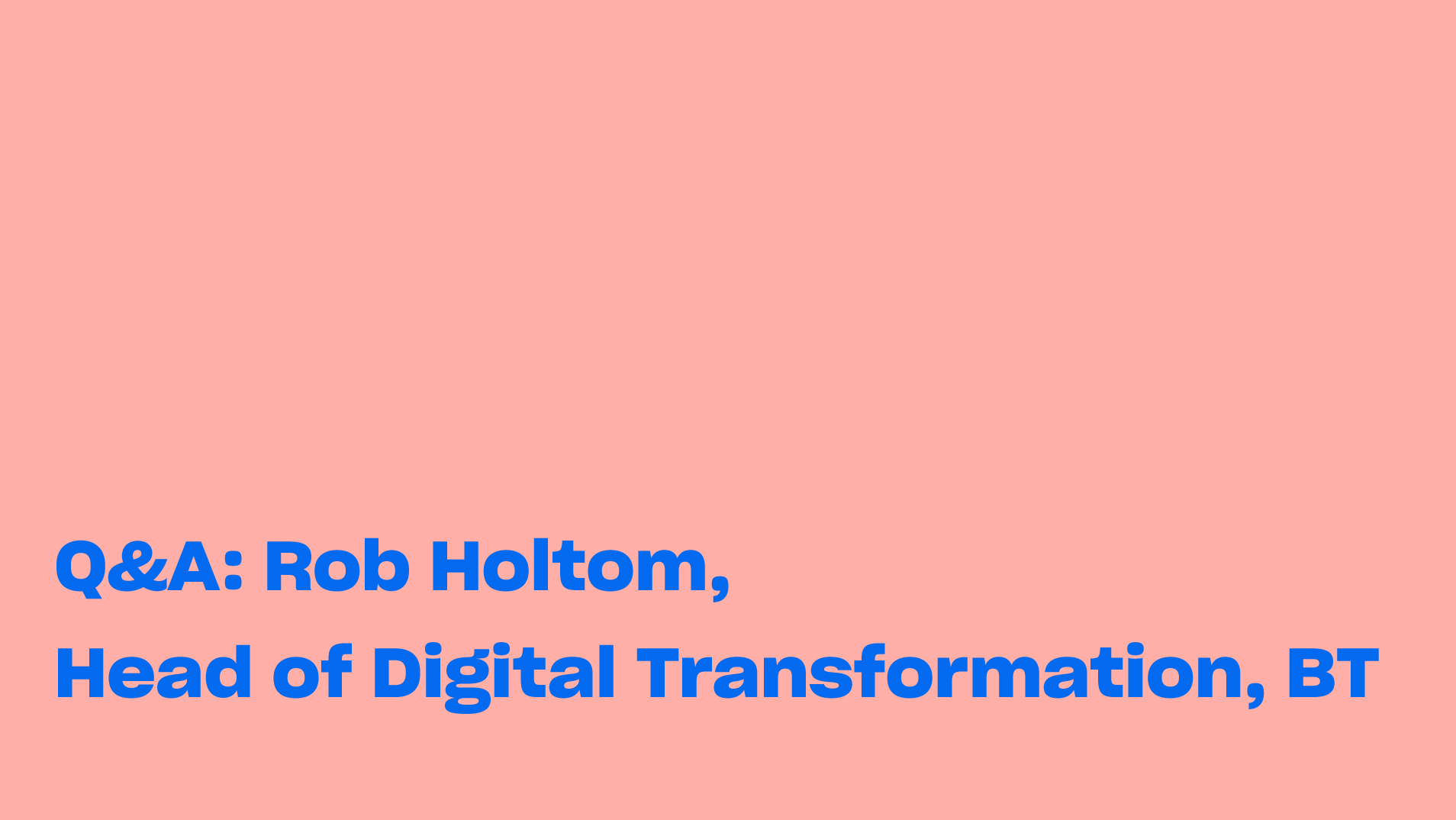IT Hero: Rob Holtom, Head of Digital Transformation, BT

“Digital is not just about a set of technologies, it’s about a mind-set, agility, speed, and collaboration – all four things are critical.” Rob Holtom, Head of Digital Innovation, BT.
Go back far enough and you’ll find the origins of BT starting somewhere in the mid 1800s, a time when sending telegrams was the epitome of Victorian technology.
Now fast-forward to today. Whether it’s phone, broadband, mobile, television or sport, BT will be remembered in history as a major influencer in the UK’s transition to a digital age.
But for a leader in digital change, how does a brand like BT continue to innovate? What are its priorities, and how does it implement change?
Let’s introduce you to Rob Holtom. Rob’s been with BT for five years, and currently holds the position of Head of Digital Innovation. In his time with the company he’s played a major role in re-launching BT.com, scouting for new technology in Silicon Valley, and has been responsible for getting buy in for a range of digital transformation projects.
We started our chat with Rob by asking why digital transformation is so important for BT:
Although BT has been investing in digital services for years, one of the things that’s become very prominent recently is that we need to also excel at customer experience. Our customers want to engage with us digitally, from multiple locations and on multiple devices; delivering a seamless, real-time customer experience is fundamental to this.
While many organisations treat customer and employee experience as two different things, we soon realised that the two go hand in hand. Ensuring your employees’ digital experience is fantastic is the key to improving customer experience. Without the right technology in place for your employees to make real-time, informed decisions you will never achieve excellent customer service!
What is the big focus for BT when it comes to digital transformation?
The big focus for us at the moment is to look at our digital experiences, the way we bring together and use data, and the marketing toolset that’s available. Over the last decade, we’ve invested in a lot of tools and are using a number of different systems, sometimes to do the same job. As such we’re not always running the best tools across the business, or systems aren’t working as effectively as they should because you end up with a situation where different siloes of people inside the business are using different technology.
The key is to bring together our technology and systems to ensure a specific toolset is available, and in doing so, create greater consistency and higher quality control across the business. This isn’t about creating a one-size-fits-all or monolithic approach though: it’s about ensuring that all parts of the business get access to the best tools that they can, so these can be used to innovate the experience.
Tell us about some of the challenges you’ve faced internally when implementing digital technology, and what you’ve done to overcome them?
There are two things that are characteristic in this sort of transformation. Firstly, adoption is a big challenge. Internally, the success of the entire project comes down to adoption of your digital innovation. You can’t just make the tools available and hope people will use them – the key here is to invest in technology your employees are familiar with and engage them in the transformation process.
Secondly, speed and agility has been challenging – particularly when trying to deploy things quickly. To become more customer-focused in IT you need a different mind-set, one that prioritises agility. Given our heritage as a company that undertakes huge, nationwide infrastructure projects, this has required a shift in thinking.
Your roles have been very diverse – you’ve been Head of Content & Portal, Technology Scout and now Head of Digital Innovation. Have you found that helps or hinders when it comes to implementing transformative projects?
Getting buy in from the board/senior leadership teams for new IT investments is never easy, but when you understanding the lingo – and the challenges they’re facing – it becomes a whole lot easier.
I tend to find that my marketing background enables me to bridge the gap between marketing and technology – helping to bring together the understanding of the IT and marketing view of the business. That understanding of both sides or the business is definitely a bonus, not a hindrance.
Digital has democratised technology – this means you have to talk the language of marketing and business as well as IT.
What advice or tips would you offer telco companies wanting to invest in cloud technology?
I think you need to demonstrate how digital supports your corporate strategy, rather than trying to create new objectives or an additional strategy around digital transformation. You need to look at what the business is trying to achieve and the role technologies like Cloud can play in enabling this – whether it’s speeding up deployment or enabling access to the latest software tools.
Next you need to bring the company with you when it comes to your digital vision. Think about what the technology means for people in their role – how it will improve their day-to-day life and speed up workflows. The key is to consider how the digital transformation process will benefit the entire organisation – both internally and externally.
You also need to think about the outcomes of what you want to achieve – for us it was agility and greater collaboration. Becoming more agile must be a priority. In terms of collaboration – enabling your employees to link up in ways they haven’t been able to in the past, especially geographically, is essential to providing a good customer experience.
Digital is not just about a set of technologies, it’s about mind-set, agility, speed and collaboration – all four things are critical.




